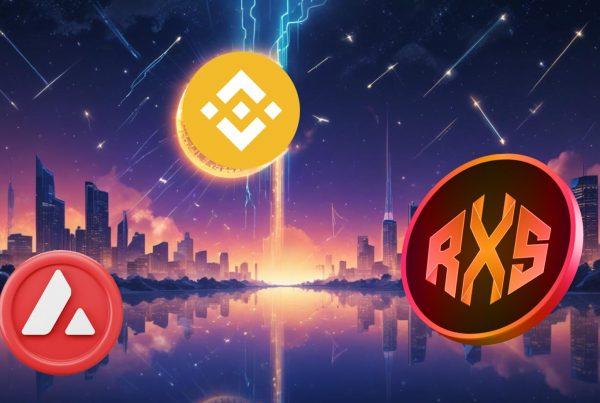In its almost 11 years of existence, bitcoin has evolved a lot over the years—in the way that it’s bought, sold, stored, and traded. Now, we’re used to not even creating a bitcoin wallet as most are provided upon registration. However, in its early days, there was only one main way to buy and sell bitcoin: traditional bitcoin exchanges.
 If you’re not familiar with how a traditional bitcoin exchange works, they’re pretty much one of the simplest ways to buy and sell bitcoin. On these platforms, users usually link their credit/debit cards and order books are used to match buyers and sellers. From that point, the platform then acts as a middleman to help both the buyer and seller complete the trade. As a result, the buyer and seller have little to no interaction with one another (and to some, the anonymity as appealing). This has made it much easier for enthusiasts that are new to trading and since these are the earliest form of bitcoin exchanges (they’ve been around longer), they’re one of the more popular methods of buying and selling bitcoin.
If you’re not familiar with how a traditional bitcoin exchange works, they’re pretty much one of the simplest ways to buy and sell bitcoin. On these platforms, users usually link their credit/debit cards and order books are used to match buyers and sellers. From that point, the platform then acts as a middleman to help both the buyer and seller complete the trade. As a result, the buyer and seller have little to no interaction with one another (and to some, the anonymity as appealing). This has made it much easier for enthusiasts that are new to trading and since these are the earliest form of bitcoin exchanges (they’ve been around longer), they’re one of the more popular methods of buying and selling bitcoin.
However, with the recent developments of bitcoin, new ways have arrived and are starting to prove themselves as contenders. This is where the peer-to-peer marketplace comes in. In recent years, peer-to-peer bitcoin marketplaces have seen a growth in popularity. This can be attributed to many things, but we’ll get to that later.
Making Trades Personal
Peer-to-peer bitcoin marketplaces, just like traditional bitcoin exchanges, usually make use of order books to match buyers and sellers. However, unlike traditional bitcoin exchanges, the platform doesn’t act as a middleman. Instead, peer-to-peer marketplaces match buyers and sellers and they complete the trade themselves—personalizing the entire trade experience. The personalized trading experience allows for several benefits: a wide variety of payment methods, more efficient communication with your trade partner, cost-efficient trades, and many more.
To give you a better idea of this type of platform works, let’s use Paxful, one of the leading peer-to-peer bitcoin marketplaces in the world. Once you sign up on Paxful, you get a free mobile wallet, saving you the trouble of having to create a bitcoin wallet. After registering, you’re ready to trade!
As a buyer, you’ll be able to input your preferences to filter the offers you’ll be seeing. For example, you can choose the currency you’ll be trading with and what payment method you’ll be using (there are over 300 on Paxful). From that point, you’ll be shown a list of offers that match your preferences. As a seller, you can create offers according to your needs. You’ll be able to set preferences such as profit percentage (how much money you’ll make on the trade), payment method (what you want to buy for your bitcoin), payment window (trade expiration), and many more.
Peer-to-Peer Marketplaces vs. Traditional Bitcoin Exchanges
Despite peer-to-peer bitcoin marketplaces being the “new kid on the block”, the medium of trade has seen a growth in popularity. This is because there are two main problems that traditional bitcoin exchanges have (which peer-to-peer marketplaces fix).
First, the fees on traditional bitcoin exchanges can stack up quite a bit. Since the platform acts as a middleman for the trade, more fees are often charged for their services. Peer-to-peer marketplaces, on the other hand, only interact with the traders if there’s a dispute—meaning fewer fees are charged.
Second, traditional bitcoin exchanges cannot cater to the unbanked population of the world—which is bigger than you think. Bitcoin enthusiasts that come from struggling economies will have a problem gaining access to a bank account and/or credit card. This will deny them the privilege of being a proud bitcoin owner. Peer-to-peer marketplaces like Paxful do not require users to link their credit or debit cards to their accounts, allowing people from all over the world to take part in the bitcoin movement.
The personalization of the trading experience can create more cost-efficient trades for users out there—a quicker, cheaper, and safer way of buying and selling bitcoins as compared to trading the “old-school” way.
Peer-to-Peer Finance and Its Real-World Applications
Peer-to-peer marketplaces aren’t only making trading safer and more cost-efficient, they’re also making bitcoin more than just an investment tool. Peer-to-peer finance is giving a financial passport to people that need it the most and with it, they are developing new and innovative real-use cases for bitcoin.
For example, everyone knows that making online payments (especially abroad) can get a little tedious and expensive because there are several financial intermediaries and barriers to consider. With peer-to-peer finance and bitcoin, people are finding ways to circumvent all of them—allowing for a safe, cheap, and quick means of making payments. This is also why sending bitcoin remittances is starting to become popular as well—there are no barriers and the fees are usually cents on the dollar as compared to traditional means of remittance. Another example of bitcoin and peer-to-peer finance as a means of survival is wealth preservation. Countries like Venezuela are experiencing extreme inflation rates and instead of watching their fiat deteriorate into nothing, people are actually converting their money into bitcoin and other cryptocurrencies.
All these real-use cases are being optimized on peer-to-peer platforms, which is one of the reasons it has seen a growth in popularity over the years. As more and more real-use cases are developed, we’ll also probably be seeing a growth in overall bitcoin adoption—only time will tell.



